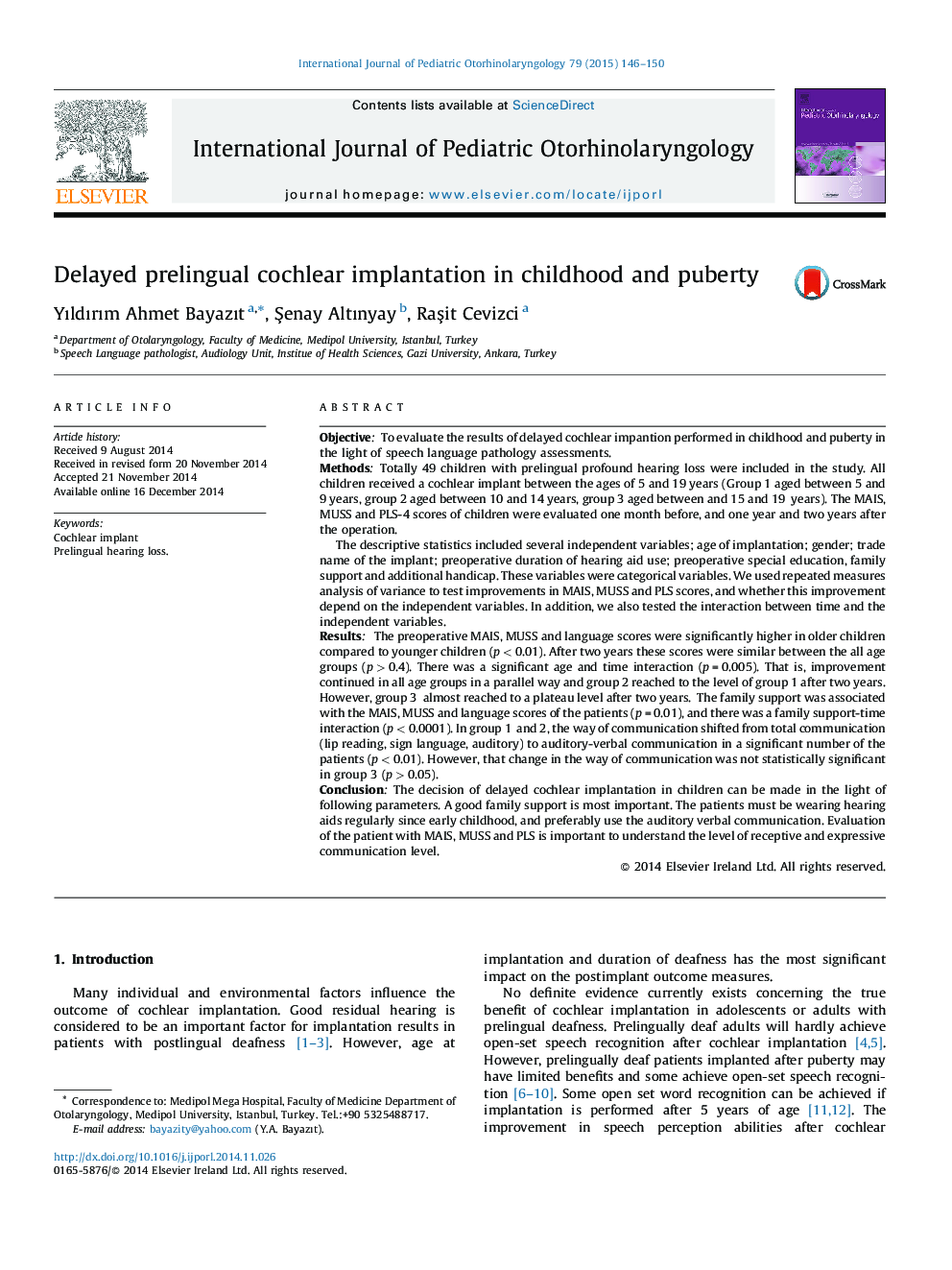| کد مقاله | کد نشریه | سال انتشار | مقاله انگلیسی | نسخه تمام متن |
|---|---|---|---|---|
| 4112041 | 1605999 | 2015 | 5 صفحه PDF | دانلود رایگان |
ABSTRACTObjectiveTo evaluate the results of delayed cochlear impantion performed in childhood and puberty in the light of speech language pathology assessments.MethodsTotally 49 children with prelingual profound hearing loss were included in the study. All children received a cochlear implant between the ages of 5 and 19 years (Group 1 aged between 5 and 9 years, group 2 aged between 10 and 14 years, group 3 aged between and 15 and 19 years). The MAIS, MUSS and PLS-4 scores of children were evaluated one month before, and one year and two years after the operation.The descriptive statistics included several independent variables; age of implantation; gender; trade name of the implant; preoperative duration of hearing aid use; preoperative special education, family support and additional handicap. These variables were categorical variables. We used repeated measures analysis of variance to test improvements in MAIS, MUSS and PLS scores, and whether this improvement depend on the independent variables. In addition, we also tested the interaction between time and the independent variables.ResultsThe preoperative MAIS, MUSS and language scores were significantly higher in older children compared to younger children (p < 0.01). After two years these scores were similar between the all age groups (p > 0.4). There was a significant age and time interaction (p = 0.005). That is, improvement continued in all age groups in a parallel way and group 2 reached to the level of group 1 after two years. However, group 3 almost reached to a plateau level after two years. The family support was associated with the MAIS, MUSS and language scores of the patients (p = 0.01), and there was a family support-time interaction (p < 0.0001). In group 1 and 2, the way of communication shifted from total communication (lip reading, sign language, auditory) to auditory-verbal communication in a significant number of the patients (p < 0.01). However, that change in the way of communication was not statistically significant in group 3 (p > 0.05).ConclusionThe decision of delayed cochlear implantation in children can be made in the light of following parameters. A good family support is most important. The patients must be wearing hearing aids regularly since early childhood, and preferably use the auditory verbal communication. Evaluation of the patient with MAIS, MUSS and PLS is important to understand the level of receptive and expressive communication level.
Journal: International Journal of Pediatric Otorhinolaryngology - Volume 79, Issue 2, February 2015, Pages 146–150
